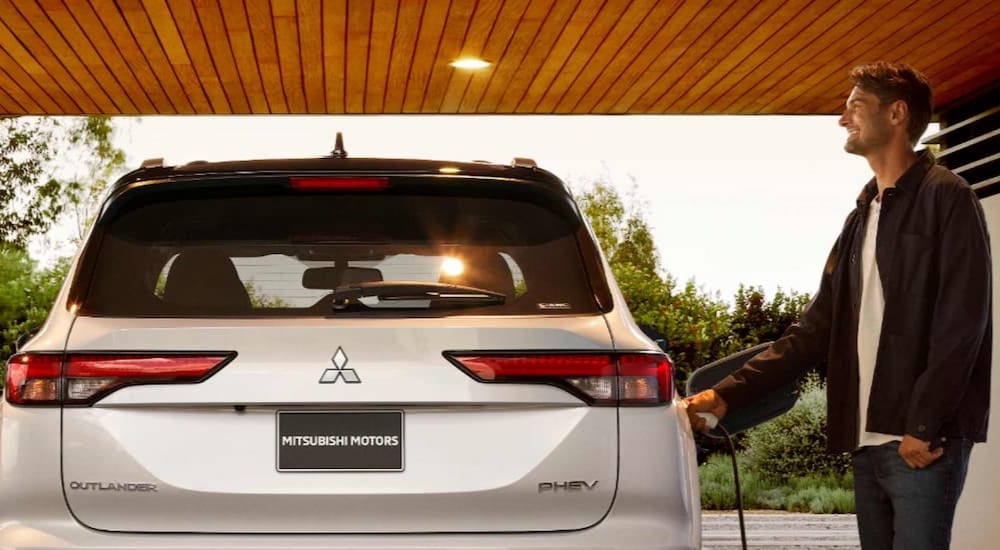There is no denying that the automotive industry is undergoing a rapid transition toward electrification. This gives eco-minded drivers an increasingly diverse array of options for making the daily commute emissions-free. Among these choices, plug-in hybrid electric vehicles (PHEVs) and battery electric vehicles (BEVs) have risen in popularity in recent years.
One major reason why folks are looking for EVs for sale is that they want to leave a smaller carbon footprint, and both types of electrification offer that benefit. However, there are differences in electric range and functionality that you will want to consider when choosing which option is right for your commute. Let’s break those differences down so you know what to expect should you decide to go the electric route.
Understanding Your Commuting Needs
Your everyday driving habits rely on the range of your electric vehicle. There are some important factors to consider when contemplating your daily commuting needs. Primarily, your daily commute distance will be a determining factor. Perhaps you only drive a short distance each day, or you might have a much longer commute. Knowing your everyday commuting distance is the first step in figuring out whether a PHEV or BEV is right for you.
Also, consider the charging infrastructure that is available along the route you normally take and whether any is available at any destination. If you can easily access a charging station at home or work, then you likely will not need as much range as someone who chiefly uses public charging to refill their battery. If you haven’t owned an electric vehicle before, one of the biggest benefits is being able to charge while at home or work.
You might not be aware of this, but the climate in which you live can affect the range of your electric vehicle. Extreme cold or heat can lessen your battery’s efficiency. Charging the battery to 100 percent every day can also be bad for it, so make sure to give yourself a healthy margin when calculating how much range you need for your commute
Everyone’s daily commute is a little different. While some folks have a highly predictable and consistent daily drive, others sometimes have longer hauls. A more flexible vehicle might be best if you do not always have the same short commute. Now that we’ve gotten the basics out of the way, it is time to dive right in and learn what separates a BEV from a PHEV. How do they differ? How do they compare in terms of range? These are things that you need to know for your commute.
Battery Electric Vehicles (BEVs)
Let’s start with BEVs. These are fully electric automobiles that are exclusively powered by a large battery pack that stores electricity. There is no internal combustion engine in these vehicles, which means they generate zero tailpipe emissions. As far as range goes, BEVs vary vastly by model and options. Overall, though, they offer significantly longer all-electric ranges than PHEVs since they rely strictly on electric power.
Advantages of BEVs for Commuting
What are the advantages of owning a BEV? As already mentioned, they do not produce any tailpipe emissions. They make for extremely clean transportation and are an environmentally friendly option for the daily commute.
Second, BEVs generally have lower operating costs than gasoline models. This is because electricity is normally cheaper than gasoline. Given the rising costs of fuel––and the fact that, with fewer moving parts than gasoline vehicles, they require less maintenance––BEVs are more affordable in the long run.
BEVs are known to run more smoothly and quietly than gas vehicles since there aren’t a ton of moving parts trying to work all at once. The ride quality is usually comfortable and enjoyable for long and short commutes alike. If you have a parking spot at home, you can easily install your own home charging station. Doing so ensures that your BEV is ready to set out each day.
Limitations to Commuting With a BEV
There are some limitations to driving a BEV. The range is certainly one of them. Based on the model you choose, your BEV’s estimated range could be as little as 161 km to as much as 830 km per charge. The shorter-range models might be sufficient for most everyday drives but may not work for drivers with extra long commutes or who have limited access to charging stations.
What’s more, charging times can vary. Charging a BEV takes quite a bit longer than refilling your gas tank––this is especially true if you depend on standard home charging and not fast charging. Fast-charging stations are out there, and some BEVs can be recharged from 10-80 percent in under 20 minutes, but stopping at one probably isn’t all that convenient during your daily commute, and fast charging costs more than home charging.
Plug-in Hybrid Electric Vehicles (PHEVs)
Next up, we have PHEVs. These vehicles combine an internal combustion engine with an electric motor. This gives them more flexibility than BEVs since they can switch over to using gasoline once the battery is dead. You can also charge the smaller battery in a PHEV using a standard electrical outlet in a reasonable amount of time, making them more practical for many drivers.
Advantages of PHEVs for Commuting
Clearly, PHEVs have the advantage of extended range due to their use of gas and electric power. While they only have an electric range of between 27 and 90 km, the gasoline range can be up to 911 km. When the battery runs out and you need some gas, you can just stop at a local gas station and fill up in a matter of minutes. If you regularly make longer drives, this might prove to be more ideal. This makes PHEVs more likely to appeal to a wider array of commuters who drive different distances.
Limitations of Commuting with PHEVs
There are some limitations to owning a PHEV. The short electric range can be problematic if you want to eliminate tailpipe emissions. PHEVs still produce emissions since they rely on gasoline after the battery is depleted. Obviously, this means PHEVs are not as environmentally friendly as BEVs if you frequently drive them in ICE mode. If you truly wish to reduce your carbon footprint, you might want to go all-electric instead. Also, PHEVs can cost more to own and operate than BEVs since you must pump fuel into them. They also have more mechanical components that require additional maintenance.
Choosing Between BEVs and PHEVs for Commuting
How do you make the choice between a BEV and a PHEV? What you choose will depend on your specific requirements. Keep in mind your daily commuting distance. If it is normally pretty short (in other words, shorter than the all-electric range of a PHEV), you might find a PHEV suits you well. On the other hand, if you make a long everyday commute, a BEV with a lot of range might serve you better.
Next, think about the charging infrastructure in your area. If charging stations are available along your route, then a BEV might be a good choice. If not, a PHEV will be the better option. This will likely change over time as charging infrastructure expands, but for the time being, where you live and drive makes a huge difference.
Your decision will also depend on how set you are on making a major environmental impact. If your main objective is to reduce your carbon footprint, a BEV is the cleaner of the two options since it only uses electricity. PHEVs are greener than standard gasoline vehicles but don’t quite get to zero emissions when running on fuel.
Consider how much you are willing and able to spend, too. The total cost of ownership is something you need to think about, including the vehicle’s operating costs, upfront price to purchase, and the rebates or incentives that are available. PHEVs often have lower upfront costs but can cost more over time due to fuel consumption and engine repairs.
How badly do you want an emissions-free drive that is both smooth and tranquil? BEVs hit this nail right on the head. Also, think about how much flexibility you need from a vehicle, as that may push you towards a PHEV.
Charging Into the Electric Future
PHEVs and BEVs are both solid choices for eco-friendly vehicles. You get zero emissions from BEVs with cost-effective long-term results for your daily commute. However, PHEVs deliver a lot of flexibility and can be handy for folks who don’t have ready access to the right charging infrastructure.
The electric vehicle market continues to grow and change, producing more models with various capabilities and ranges. Consumers are getting more choices now than ever before. The key to deciding what to buy relies on your access to charging, concern about the environment, daily driving habits, and budget. When you get the right vehicle for you, you can revel in a sustainable and budget-friendly car that is built to last.






